

TEXT - 3 Ways to Improve Parent–Teacher Communication. TEXT - Six Tips for Communicating Student Progress to Parents. Mumble the words “report card” and watch teachers shudder with dread.
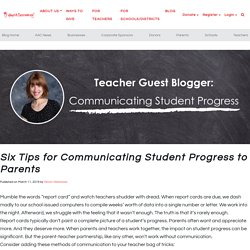
When report cards are due, we dash madly to our school-issued computers to compile weeks’ worth of data into a single number or letter. We work into the night. Afterward, we struggle with the feeling that it wasn’t enough. TEXT - 10 Strategies for Schools to Improve Parent Engagement. By: Jennifer Larson Studies of successful schools indicate that a high rate of parent involvement is a major factor in their success and can even help close the achievement gap between groups of students.

Yet while 85 percent of parents feel they could personally make “a lot” or “a fair amount” of difference in their child’s learning and academic progress, 46 percent of parents wish they could do more to support their child’s education. TEXT - Effective team communication? Focus on quality! Key points The relationship between team communication and team performance may depend on many different factors, like how much face-to-face time the team has, how familiar they are with each other, or the way that team members communicate with each other.The link between communication and performance seems to be stronger when you focus on the quality, rather than the quantity of communication.

When you are seeking to improve the quality of your team’s communication, it may help if you address both the “what” – the content of the communication, and the “how” – the way your team communicates. TEXT - Communicating Important Information with ELL Families: Strategies for Success. It is critical for schools to understand the rights that English language learners (ELLs), immigrant students, and their families have regarding access to schooling and information in their home languages.
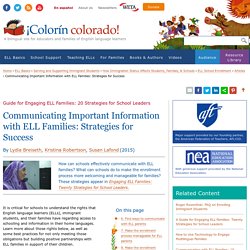
Learn more about those rights below, as well as some best practices for not only meeting those obligations but building positive partnerships with ELL families in support of their children. Supporting immigrant families For related ideas, see the following: TEXT - MYTHBUSTERS: FLEXIBLE LEARNING IN MIDDLE SCHOOL. This blog was originally published on Singapore American School’s Perspectives Blog.
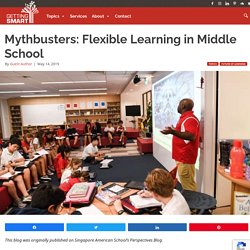
By: Lauren Mehbrach, Chris Beingessner, and Chris Raymaakers In the fall of 2016, middle school began moving towards providing more personalization for our students through the use of flexible time and space, and implementing interdisciplinary units. TEXT - 12 Ways to Upgrade Your Classroom Design. TEXT - Flexible learning spaces focus on helping students be productive, comfortable. TEXT - Why Flexible Learning Environments? By: Lauren Mehrbach and Chris Beingessner.
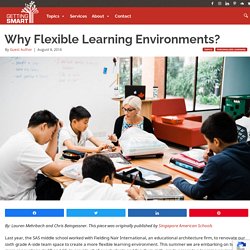
This piece was originally published by Singapore American Schools Last year, the SAS middle school worked with Fielding Nair International, an educational architecture firm, to renovate our sixth grade A-side team space to create a more flexible learning environment. VIDEO - Flexible Classrooms: Providing the Learning Environment That Kids Need (4 mins 18 secs) TEXT - A Classroom Full of Risk Takers. I asked my other son the same question and got an equally troubling answer. He never had to take a risk because his classes were too easy. That raised a new question: Do I make my classes challenging enough so students have to take risks?
I strongly believe that you have to fail in order to grow, and you need to do that through difficult situations. How rigorous are my classes? TEXT - Goal Setting for Students, Kids, & Teens (Incl. Worksheets & Templates) Do you remember when you learned how to set goals?

If you have trouble answering that question, you’re not alone! Most of us don’t spend much time thinking about how we set goals. In fact, many of us don’t even think of goal setting as a skill; rather, it’s just something we do without reflecting on it much. However, goal setting is a practice that operates on a set of specific skills—and luckily, these skills are relatively easy to teach. TEXT - Goal Setting for Students Is Easier Than You Think. As a teacher, you regularly think about goal setting for students.
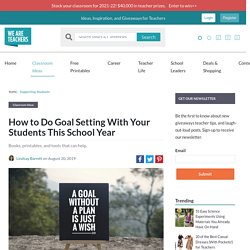
From improving skills and meeting standards to being kind and putting the darn caps back on the glue sticks, there’s always something to strive towards. Have you tapped into the power of setting goals with students, though? TEXT - How do I develop student ownership and accountability in a station rotation model? Student Data: Empower students to own their learning In order to allow students to continually grow, they need constant feedback and reflection.

Though it may be a teacher’s instinct to interpret student performance data and give students direct feedback, shifting part of the data analysis and reflection to students empowers them to understand their ongoing progress, constantly reflect, and try new strategies to improve. As with any other skill, students need guidance and support in... Interpreting their data.Making conclusions.Identifying next steps. WEBSITE - Formative Resources.